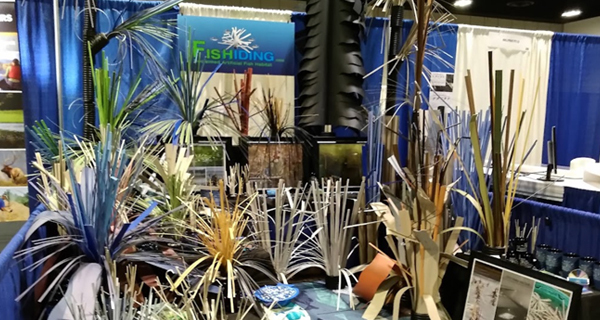A Quick Guide To The Types Of Crappie Fishing Structures
Posted by Admin on 2nd Mar 2023
Crappie fishes or sometimes called slabs, are related to cover and follow distinct patterns during each season. In the spring, they are found in the shallows, while in summer, they can be suspended deeper in the thermocline. At times, fishing becomes very difficult when they move deeper, while late in the season, they are much closer to the bottom during winter. This is where a crappie structure is needed. These structures can be of different types, designed to work in specific water depths. Let us now see the different types of crappie structures that are available.
The Stake Bed
Installing stake beds for crappie fishing is a time-consuming process. So, suppliers have come up with a permanent solution for this. The stake beds are vertical fish cribs, mostly made of PVC. These are also called crappie stake beds or fish beds. Each bed comprises dozens of rigid and flexible plastic stakes held together in a weighted base. Three units of these beds create a cluster of vertical fish cover. They have a lift that helps them to stand up even if dropped on steep slopes. The PVC limbs are ultra-flexible and extend from the base on angles. This exposes the surfaces to gather maximum sunlight. These crappie structures can be bent at random angles, and you can also experiment with different layouts and shapes. Stake beds give the best results when placed in large clusters.
Briar Bush
This consists of 3-5 completed briar bush crappie structure units. Such structures help the fish thrive and survive in its protection. They consist of numerous snags and holes that keep the predators away. These structures mostly consist of an 8-inch diameter cement base, so the units stay down. Flexible and long PVC stands are inserted into the cement base, which can be bent in any direction. Each unit usually has around 25 square feet of algae growing surface area, which helps to feed the hungry newly hatched fry. You can place these structures under your dock, besides known spawning beds, or along the seawall.
Fishadow
This is a unique type of fish habitat made of flowing, moving and vertically standing walls of fish covers. They are usually 60 inches tall and 50 inches wide, with more than 80 wide fingers. The structures are made of thin, durable PVC, which is placed vertically. Look for the ones with the correct thickness and cuts so that the pieces wave in the water, like plant leaves or other weightless material. The limbs of the layout move softly in the wave and current action. Once the Fishadow is dropped into the lake, the limbs tend to relax and flow back and forth. This movement creates a massive surface area and infinite fishing hiding spaces.
Shallow Barrel Fish Crib
These are super dense, heavily weighted fish structures, ideal for protecting smaller fish. They are sturdy, robust and ultra-stable and can hold hundreds of forage fish and aquatic bugs. The barrel systems can be used to create dense and complex artificial fish habitats on a large scale, as only one of these fish barrels is equal to multiple individual fish habitats.
To Sum Up
These are a few types of crappie habitat structures that are widely used for crappie fishing. However, which one of them you choose will depend upon the depth of the water body where you wish to place it.



